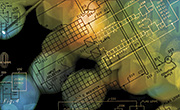
Federal Circuit's Unanimous En Banc Decision Focuses on "Attribution to a Single Entity" to Establish Divided-Infringement Liability
On August 13, 2015, the Federal Circuit issued an en banc decision in Akamai Technologies, Inc. v. Limelight Networks, Inc., stating in a per curiam opinion that "we unanimously set forth the law of divided infringement under 35 U.S.C. § 271(a)." In doing so, the court held that liability for divided infringement "is not limited solely to principal-agent relationships, contractual arrangements, and joint enterprise…. Rather, to determine direct infringement, we consider whether all method steps can be attributed to a single entity." This decision is the latest installment in a dispute that has spanned four different Federal Circuit opinions (including two en banc decisions) and an opinion and remand by the U.S. Supreme Court. (For analysis regarding the prior decisions, read our Jones Day publications, "Divided Federal Circuit Panel Stands by the Single Entity Rule for Direct Patent Infringement" and "Key Patent Law Decisions of 2014.")
The en banc court began its analysis by stating that direct infringement "occurs where all steps of a claimed method are performed by or attributable to a single entity." The Federal Circuit then instructed that when multiple actors are "involved in practicing the steps, a court must determine whether the acts of one are attributable to the other[s] such that a single entity is responsible for the infringement." To make that determination, the court identified two scenarios where an entity may be "responsible for others' performance of method steps[:] ... (1) where that entity directs or controls others' performance, and (2) where the actors form a joint enterprise."
Addressing the first scenario, the Federal Circuit reiterated its prior decisions that "determin[ing] if a single entity directs or controls the acts of another" requires consideration of "general principles of vicarious liability." The Federal Circuit acknowledged the imperfect fit of using the term "vicarious liability" in the context of patent infringement. The court explained the distinction that "[i]n the context of joint patent infringement, an alleged infringer is not liable for a third party's commission of infringement—rather, an alleged infringer is responsible for method steps performed by a third party." The court stated that "[n]evertheless, as both vicarious liability and joint patent infringement discern when the activities of one entity are attributable to another, we derive our direction or control standard from vicarious liability law."
Then, extending earlier precedent where divided-infringement liability rested on "traditional agency principles" or "contracts with another to perform one or more steps of a claimed method," the Federal Circuit held that liability also exists "when an alleged infringer conditions participation in an activity or receipt of a benefit upon performance of a step or steps of a patented method and establishes the manner or timing of that performance." The court noted that "[w]hether a single actor directed or controlled the acts of one or more third parties is a question of fact."
Addressing the second scenario, the Federal Circuit explained that "where two or more actors form a joint enterprise, all can be charged with the acts of the other, rendering each liable for the steps performed by the other as if each is a single actor." Recognizing that the existence of a joint enterprise is a factual question, the court looked to the Restatement (Second) of Torts to tailor a four-factor test for analyzing the issue:
- Is there an express or implied agreement among members of a group?
- Is there a common purpose to be carried out by the group?
- Is there a "community of pecuniary interest" in the common purpose among members of the group?
- Is there an "equal right to a voice in the direction of the enterprise, which given an equal right of control"?
By expanding the circumstances in which divided-infringement liability may be found, the Federal Circuit expressly overruled Golden Hour Data Systems, Inc. v. emsCharts, Inc., 614 F.3d 1367 (Fed. Cir. 2010)—which had found no liability under circumstances similar to those that would qualify for a joint enterprise—and its prior decisions limiting divided-infringement liability to principal-agent relationships and contractual arrangements. Moreover, although the court identified two overarching scenarios for divided infringement and articulated specific circumstances for each scenario in which liability may be found, the Federal Circuit made clear that "[i]n the future, other factual scenarios may arise which warrant attributing others' performance of method steps to a single actor. Going forward, principles of attribution are to be considered in the context of the particular facts presented."
Turning to the specific facts of the case, the court held that substantial evidence supported the jury's verdict that the defendant was liable for direct infringement. The court noted that the defendant performed all the claimed steps except for "tagging" and "serving," which were performed by the defendant's customers. However, the court concluded that the customers' actions were "directed or controlled" by the defendant for two reasons.
First, through contractual obligations, the defendant "condition[ed] its customers' use of its content delivery network upon" performance of the claimed "tagging" and "serving" steps. Second, by "provid[ing] step-by-step instructions to its customers," defendant "establish[ed] the manner or timing of its customers' performance" of the claimed steps.
As a practical matter, the Federal Circuit's latest opinion demonstrates an effort to bring uniformity to a divided court on the issue of divided infringement by setting forth specific scenarios where liability may be found, while permitting future decisions to fashion additional tests as dictated by particular circumstances. Whether the Federal Circuit has successfully addressed the divided-infringement issue will likely be tested by a potential petition for certiorari.
In the meantime, the Federal Circuit's opinion may lead to increased enforcement of patents that require multiple actors to perform the steps of a method claim, particularly against actors that have operated their businesses in reliance on narrower precedents that have been overruled. Moreover, because the Federal Circuit did not rely on the joint enterprise theory in this case, district courts will be at the forefront of determining how that theory of liability will be applied in practice. And, because the joint enterprise theory creates the potential for multiple actors to be liable for the same act of infringement, district courts may see an increase in indemnification and contribution claims. While waiting to see whether the Supreme Court weighs in on divided infringement, practitioners should be aware of the potential for increased liability and the likelihood of further development of divided-infringement law on the horizon.







